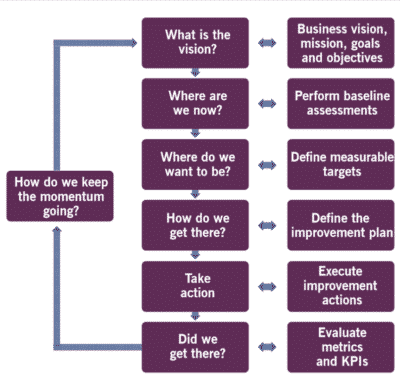| Table of Contents |
|---|
...
| Reference_description_with_linked_URLs_______________________ | Notes______________________________________________________________ |
|---|---|
| m Business Process Solution Design Tools | |
| s Blockchain Opportunity Assessment - BOA | |
| m Consulting Process | |
| VCE > Value Chain Economies are virtual economic communities | |
| Design Tools | |
| m REST API design and tools | |
| m REST | |
| m Design Patterns | |
| m Design Engineering Themes | |
| api-service-mgt-v1 gdoc | |
| api-service-mgt-v1.docx | |
| https://itsmacademy.com/content/WHATIS_The_ITIL_Maturity_Model.pdf | |
| https://www.infopulse.com/blog/itsm-maturity-assessment-checklist | |
...
https://www.owlpoint.com/itil-4/itil-service-value-system/
Principles
The guiding principles helps an organization’s decision making by ensuring there is a shared understanding and common approach to service management across the organization. Each of the guiding principles can be used to evaluate whether an approach or decision meets the fundamentals of the organizations goals and helps sets the organization’s behaviors and culture.
Governance
Governance ensures that the actions of the organization are aligned properly with the strategic direction and goals established by the sponsor groups or governing bodies. It is governance that ensures that value is actually achieved, not just talked about as a target.
Service Value Chain
The Service Value Chain is an operating model for the creation, delivery, and continual improvement of services. The service value chain represents a set of key activities that leverage various practices to form different value streams. These value streams can be adapted for different types of organizations, including those that have distributed IT versus a centralized IT.
Practices
Practices are the evolution of processes and functions from previous versions of ITIL. They are a set of organizational resources, based on the elements of the four dimensions of service management, designed for performing work or accomplishing an objective.
Continual Improvement
Continual Improvement is an ongoing set of organizational activities at all levels that ensure that the organization’s performance continues to meet the evolving objectives of its key stakeholders.
...
Maturity Model vs Maturity Assessment
The ITIL Maturity Model establishes the criteria to achieve each level of maturity of the Service Value System and the capability of each of the 34 ITIL 4 Practices. The ITIL Assessment is a process of evaluating an organization against a specific set of practices and usually the organization’s adoption of a Service Value System using the criteria established by the ITIL Maturity Model.
3 types of Assessments
There are 3 types of assessments that have been defined by AXELOS. They are:
...
CIP - Continuous Improvement Process
BWC defined in. 1985
The purpose of Continual Improvement is to ensure service and products align – and remain aligned – to the Business continuously.
https://www.infopulse.com/blog/itsm-maturity-assessment-checklist
...
https://about.gitlab.com/handbook/engineering/infrastructure/service-maturity-model/
ITSM
ITSM platform functional concepts. - Gartner
ITSM levels
https://www.infopulse.com/blog/itsm-maturity-assessment-checklist
...




